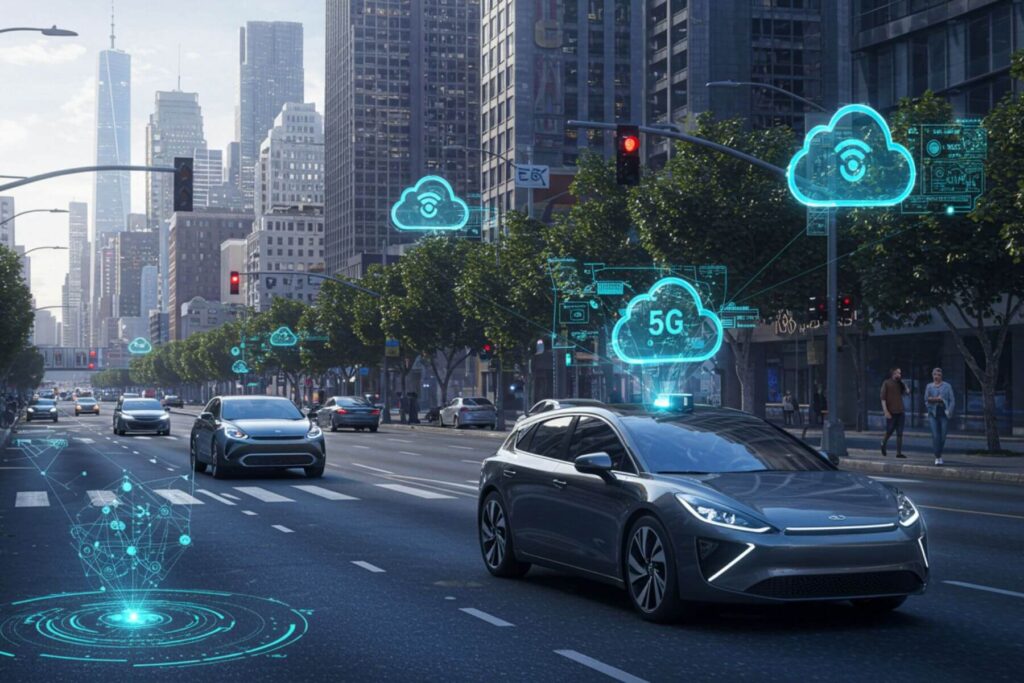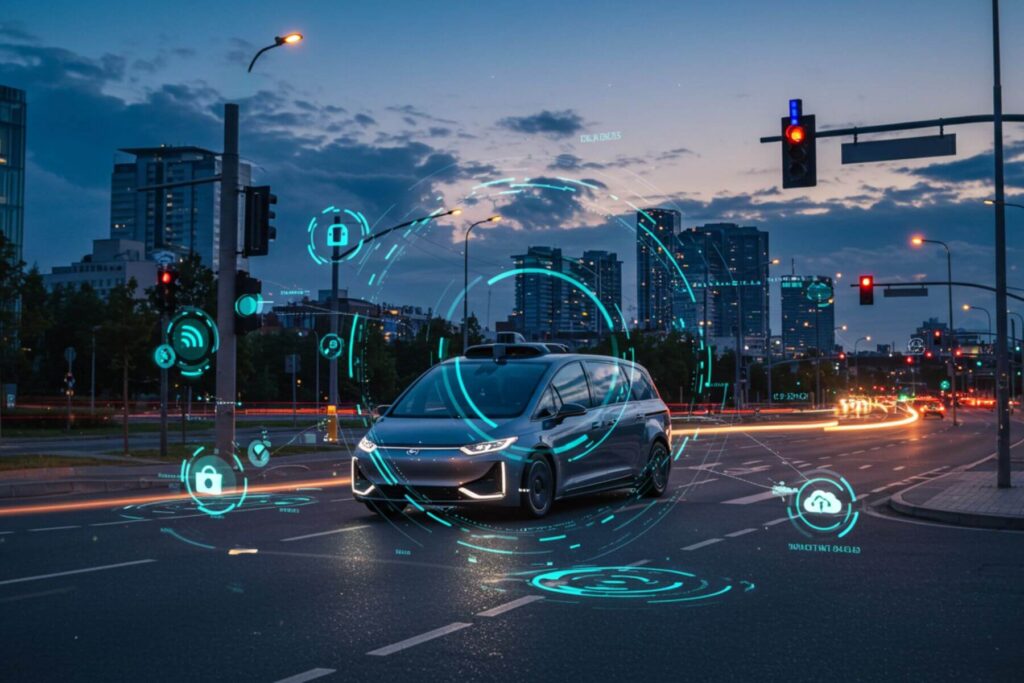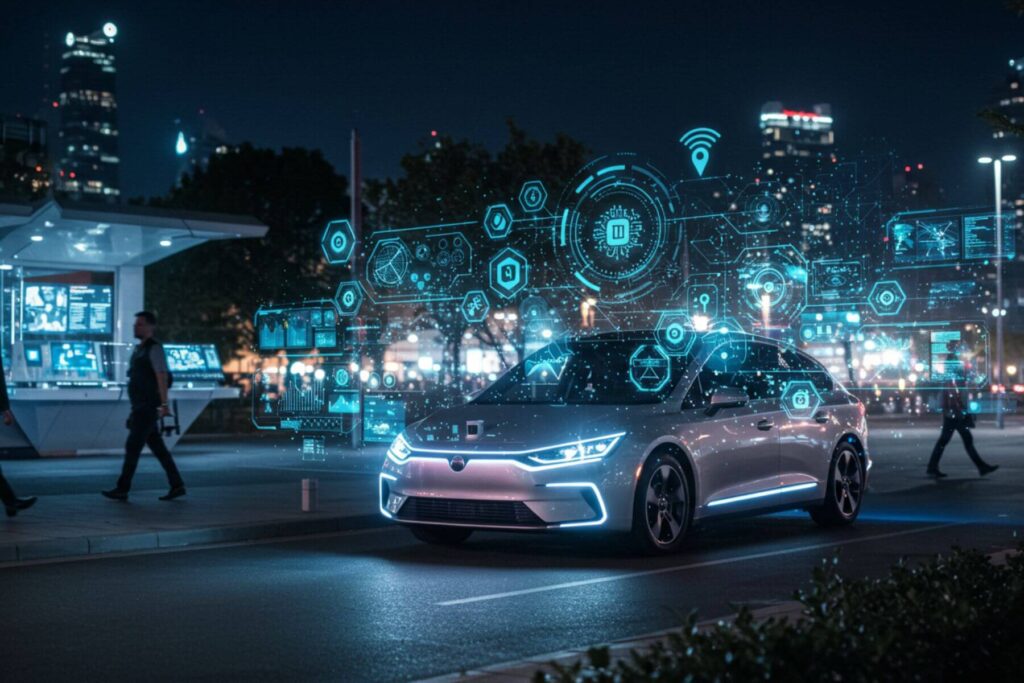Robotaxis are no longer a futuristic dream. In 2025, they are operating in cities around the world, offering driverless rides that are not only convenient but also impressively safe. Behind the wheel, or rather, behind the sensors and screens, is a powerful suite of software innovations that work tirelessly to make sure every trip is smooth and secure. These software tools are the real heroes of autonomous mobility. Let’s take a closer look at the ten most important ones enhancing safety in robotaxis today.
1. Advanced perception algorithms
At the heart of every robotaxi is its perception system. In 2025, new deep learning models are allowing vehicles to better understand their surroundings. These advanced perception algorithms can detect not only pedestrians and cars but also tricky obstacles like cyclists weaving through traffic or animals darting into the road. They interpret camera and LiDAR data in real-time, recognizing changes in weather, lighting, and traffic patterns. These improvements help robotaxis make safer decisions by understanding complex scenes more like a human would, but with faster and more consistent accuracy.
2. Predictive path planning software
Safe driving is not just about seeing what’s around you; it’s about predicting what could happen next. Predictive path planning software uses historical driving data, real-time analytics, and behavioral models to forecast the actions of nearby vehicles, pedestrians, and even traffic lights. In 2025, this software has become far more sophisticated, allowing robotaxis to anticipate lane changes, sudden stops, or jaywalking pedestrians. With this foresight, robotaxis can adjust their speed, change lanes, or reroute more safely, preventing collisions before they happen.
3. Redundant safety protocol engines
No system is perfect, and that’s why redundancy is critical. Modern robotaxis use multiple software safety engines that operate in parallel. In 2025, these redundant systems don’t just act as backups; they actively cross-check each other. If one system detects a hazard but the other does not, the vehicle can enter a caution mode or safely pull over. These built-in protocols create a layer of software-based accountability that dramatically reduces the chance of system failure or misjudgment, especially in complex or unpredictable situations.
4. Real-time fleet monitoring and intervention tools
Even though robotaxis are autonomous, human supervisors are still involved, but in smarter ways. Fleet monitoring software allows real-time oversight of robotaxi performance from remote operations centers. If a vehicle encounters a confusing situation, such as an unmarked construction zone or emergency response vehicles, the system can alert human operators who can review the scene and offer guidance or take over remotely. In 2025, these monitoring tools use AI to filter thousands of data points to identify only the events that truly need human review, making the process fast and efficient without overwhelming support staff.
5. High-definition mapping and localization software
Robotaxis don’t rely solely on GPS. Instead, they use ultra-precise HD maps with centimeter-level accuracy to navigate. In 2025, mapping software now update dynamically, meaning it can detect and adapt to changes in real time. If a street is closed or a new lane is added, the map system updates instantly and shares that information with the rest of the fleet. This innovation prevents robotaxis from making unsafe decisions due to outdated information. Combined with localization software, which helps vehicles determine their exact position even in GPS-blocked areas like tunnels or urban canyons, the system ensures safer driving at all times.
6. Sensor fusion and environmental modeling
In a robotaxi, multiple sensors, cameras, radar, LiDAR, and ultrasonic sensors collect information simultaneously. In 2025, software has greatly improved in combining these inputs into a single, accurate model of the world. This process, called sensor fusion, eliminates blind spots, reduces false positives, and helps the vehicle make smarter decisions in difficult conditions such as fog, snow, or glare. Environmental modeling software creates a 3D representation of the area around the car, complete with moving objects and predicted paths. With this 360-degree awareness, robotaxis can react to danger in milliseconds and avoid accidents with pinpoint accuracy.
7. Machine learning-based driver behavior emulation
Passengers are often more comfortable in robotaxis that feel human in the way they drive. In 2025, machine learning software trained on millions of hours of human driving data enables robotaxis to emulate the safe behaviors of cautious drivers. These models are able to understand nuanced social driving cues, like gently yielding to aggressive drivers, smoothly merging onto highways, or leaving extra space in bad weather. This human-like behavior not only improves comfort but also safety, as the vehicle interacts more naturally with other drivers on the road.
8. Adaptive safety zones and risk management AI
Every road situation carries a different level of risk, and in 2025, robotaxis adjust their behavior accordingly. Adaptive safety zone software uses AI to assign real-time risk scores to different areas around the car. For example, a school zone with children nearby gets a high-risk rating, prompting the robotaxi to slow down and increase caution. On an empty road, the risk zone is lower, allowing normal speed and behavior. This risk-sensitive software allows robotaxis to behave dynamically, enhancing safety without being overly conservative or slow.
9. Continuous self-diagnostics and error recovery
Safety also means knowing when something is going wrong inside the vehicle itself. In 2025, robotaxis are equipped with software that constantly monitors the health of every system, from brakes and steering to the software stack itself. If something malfunctions, the system runs self-diagnostics and either fixes the problem or triggers an automatic safe-stop protocol. Error recovery tools are now capable of resolving minor glitches on the fly, keeping passengers safe without unnecessary interruptions. This internal vigilance is key to maintaining trust in fully autonomous rides.
10. Cybersecurity defense layers
With robotaxis being connected and data-driven, cybersecurity is a top priority. In 2025, multi-layered defense systems protect every software component from hacking or tampering. These include encrypted communication, anomaly detection software, and behavior-based intrusion prevention systems. The robotaxi’s software learns to detect anything that looks suspicious, like abnormal data inputs or unusual driving commands, and blocks them immediately. Strong cybersecurity ensures the vehicle’s control systems remain intact and trustworthy, preventing malicious actions that could jeopardize safety.
Bottom line
Robotaxis in 2025 are safer than ever, thanks to a powerful combination of software innovations. These tools not only help the vehicles “see” better and “think” faster, but also adapt in real-time, respond to the unexpected, and learn from experience. By integrating advanced AI, real-time risk assessment, remote monitoring, and airtight cybersecurity, the robotaxi industry is setting new standards for what safe driving looks like, without a human behind the wheel.
As these technologies continue to evolve, we can expect robotaxis to become even safer and smarter. The future of mobility isn’t just autonomous; it’s intelligently designed for maximum protection.



